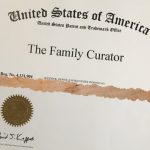What’s the difference between acid-free, buffered, lignin-free, and archival? They are all terms frequently used to describe supposedly safe storage boxes and other enclosures for paper documents and photographs; however, according to The Northeast Document Conservation Center in Andover, Massachusetts these labels do not all refer to the best storage solutions for your family treasures.
The NEDCC is a consortium of state libraries in New England and the Atlantic states sharing a conservation facility which provide services and educational workshops for historical societies, college and university libraries, public libraries, and town and state archives. The organization also offers twice yearly conservation workshops and a series of pamphlets on conservation techniques.
Family historians will be interested in The NEDCC Resources for Private and Family Collections which addresses questions such as how and where to store family documents and photographs, as well as how to choose suitable archival storage enclosures (hint: not “acid-free”).
The article reiterates advice to keep documents and photographs out of light and heat or fluctuating temperatures, but also addresses specific tips for special situations such as wedding photographs, removing staples safely, and preserving newspaper clippings.
The NEDCC also hosts a series of one-day Fall and Spring Workshops in Andover on a variety of conservation topics. Fall sessions run September 29 – October 8. The Spring 2010 session will be held in March and feature workshops on scrapbook preservation, metadata basics, grant writing, and preserving oversize artifacts. While the program is aimed at conservation professionals, some workshops are open to interested individuals as well.






Love this website, as well as your article directing us to such great information.
-fM